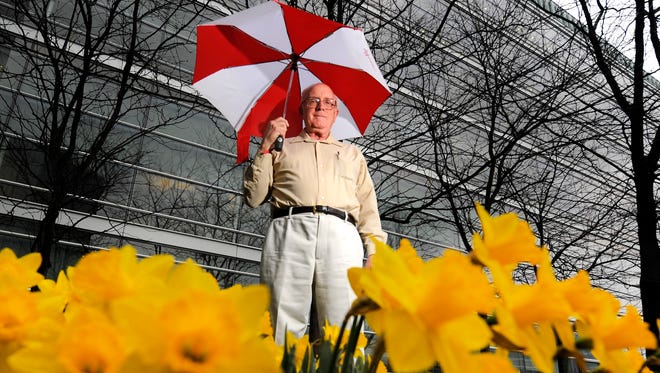First storm chaser still roams Tornado Alley

On days like today when severe weather threatens, the Plains are usually clogged with dozens of storm chasers — scientists, tourists, photographers and thrill-seekers — all out to get a glimpse of a tornado.
But once upon a time, back in the 1950s and 60s, there was only one storm chaser: David Hoadley, a now-retired budget analyst with the federal government who lives in Falls Church, Va. — and still chases.
Hoadley, 76, is considered the "father" of storm chasing and has the "longest storm-chasing career," according to the Guinness Book of World Records. His interest in severe weather began back in 1956, just after graduating from high school, when a windstorm lashed his hometown of Bismarck, N.D.
"A storm came through the city one evening and took out the electricity for most of the city," he said. "I was very impressed with the damage that was done. So I decided I had to learn more about it. I was curious."
A self-taught severe storm expert, Hoadley has chased annually since the late 1950s, taking his vacations during the peak severe storm season of April, May and June. He was joined in the 1970s by other chasers, mostly scientists curious to learn how these meteorological monsters worked.
The peak of scientific storm chasing, he said, was the early 1980s. Since then, the tornado chasing ranks have swelled to include non-meteorologists: regular folks such as photographers, videographers, tourists and thrill-seekers of all sorts.
The worst day in the history of chasing was May 31, 2013, when a ferocious tornado killed three veteran chasers — Tim Samaras, his son Paul and colleague Carl Young — near El Reno, Okla. Hoadley, who was there that day, was a friend of the Samaras. To his knowledge, that's the only time a tornado has killed storm chasers. The twister killed five other people.
"Nobody that day knew what was going to happen when we started," Hoadley said. "We knew it was going to be a big tornado but that anyone would lose their life was the last thing in our minds."
It was an unusual storm, he admitted, a rapidly moving system that grew in size much faster than most storms of that nature. The doomed chasers "were in the wrong place during the wrong storm," he said.
It was a turning point in storm chasing, and there's more respect now, both for the ferocity of the storms and for each other, Hoadley said. But should storm chasing be stopped or curtailed? "We can't put that genie back in the bottle," he said.
Over his more than 50 years chasing, the meticulous record-keeper said he's seen exactly 231 tornadoes, an average of about 4 or 5 per year. It also involves a lot of driving: when he goes out chasing, he puts as many as 5,000 miles a week on his car. He estimates he's driven at least 750,000 miles over the years.
Hoadley shows no signs of slowing down; he's out on the Plains again this week — during the first major severe storm outbreak of the season — hoping to see yet another tornado.
He sees it as another way of seeing the natural wonders of the U.S. "Storm chasing is not that different, it's just that the tornadoes are ephemeral, brief events but also something you can remember months or even years later," Hoadley said.
